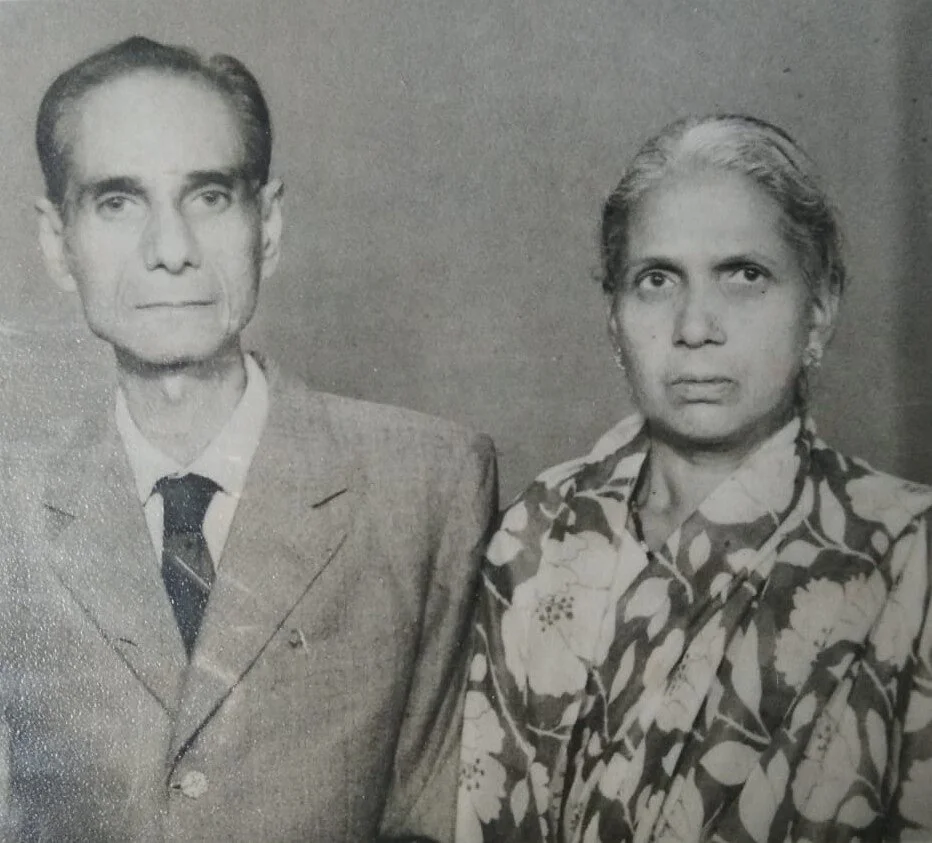This website is about the family of Hamid Jamal son of Hafiz Jamaluddin. He was the only son of his father’s third wife. He was born in 1915. The month and date was written in his father’s business book (general ledger) that was lost, thus the only birth year is known as 1915.
In Islam any name that describes the attribute of Allah should precede with “Abdul”, meaning “slave of”. The word Hamid is an Arabic word that means “Praiseworthy” which is an attribute of Allah. So his name should be Abdul Hamid Jamal. He was also a teacher by profession so people used to call him Master Abdul Hamid Jamal. He was a graduate of Master of Art degree in Parsian. He was enrolled in Master of Art degree in Urdu, a two year program, completed first year but could not finish second year to get degree.
Hafiz Jamaluddin was one of four sons of Haji Tursam of Amrai (pronounced as Am-raa-ee) a place in Mau (Mau Nathbhanjan) district Azamgarh of Utter Pradesh state, India, Hafiz Jamaluddin migrated to Kamptee, district Nagpur of Maharashtra states, India around 1875. He was very successful businessman in and around Kamptee area and a religious person. He has gone through many challenges in life, multiple migrations, two wives death, 11 kids and loss of kids during his life time.
Three other brothers of Hafiz Jamaluddin are Abdullah, Abdul Waris and Mohammad Ismail. Later two settled in Kamptee. Abdullah along with son Mohammad Ali moved to Saudi Arabia in early 1900 and settled there, by now they must have become fully Arab and Arab citizens, it has been almost 4 -5 generations now.
Hafiz Jamaluddin had three kids from third wife Mariam, first born Zubaida, 2nd Abdul Hamid Jamal and third Ayesha. She died at the age of 18. Hafiz Jamaluddin had 9 kids (6 girls and 3 boys) from first two wives, who died one after another before marrying Mariam.
Hafiz Jamaluddin died in August 1932 and his wife, mother of Abdul Hamid Jamal, Mariam died on June 28 1967.
Abdul Hamid Jamal had nine sons with wife khadija. All of them were well educated and well settled in Kamptee near Nagpur and New Delhi India. He died on May 4th 1980. Wife Khaija Jamal died in 2002. Following is chronological order of their sons.
Mohammad Aslam Jamal
Dr. Arshad Jamal
Salimuz Zafar Jamal
Dr. Rasheeduz Zafar Jamal
Naveeduz Zafar Jamal
Mohsin Jamal
Ahsan Jamal
Anjum Jamal
Naimuz Zafar Jamal
Zubaida married to Khurshid Haque son of Munshi Mohammad Sayeed. Munshi Mohammad Sayeed was cousin brother of Hafiz Jamaluddin. Khurshid Haque died in Kamptee in 1962. His remaining family members, wife Zubaida, sons Anisuddin Kurshid, Qamarudding, Badruddin, Farzana, Bashiruddin, Zahiruddin migrated to Pakistan in 1964. Two older daughters Mehrun and Akhtar did not migrate and stayed with their husbands in Kamptee and Nagpur respectively. Anisuddin Khurshid was well known personality of Pakistan in the field of library science, graduated from USA, died in 2008. He was also awarded with Pakistan’s highest civilian award.
Zahiruddin Khurshid son of Khurshid Haque moved to Pakistan and settled in Dallas, TX, USA and wrote his autobiography available on Amazon called “Kamptee to Dallas”.







